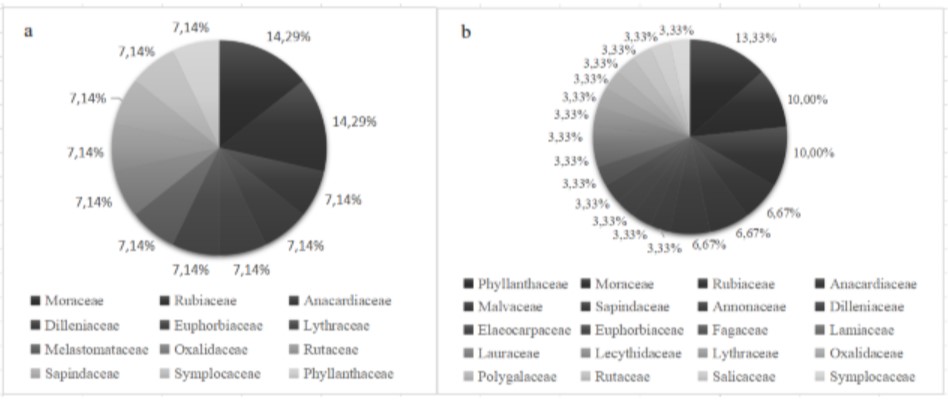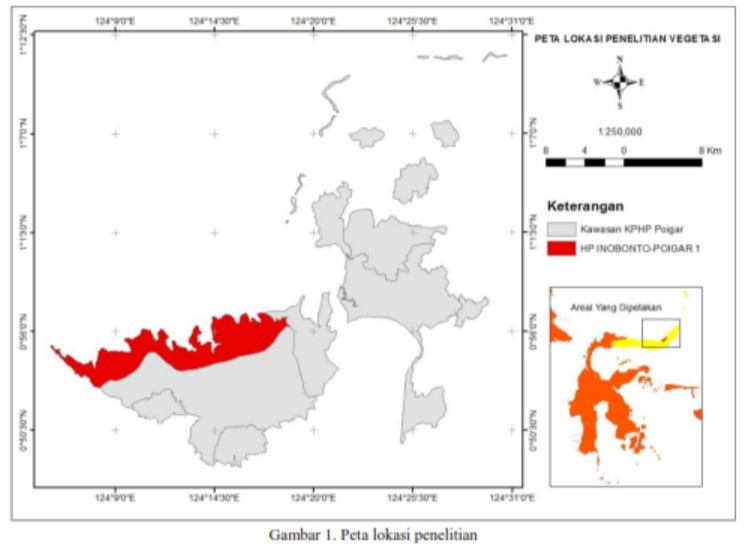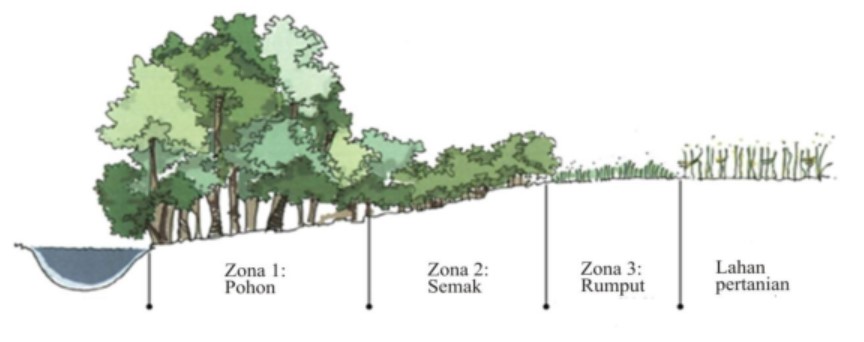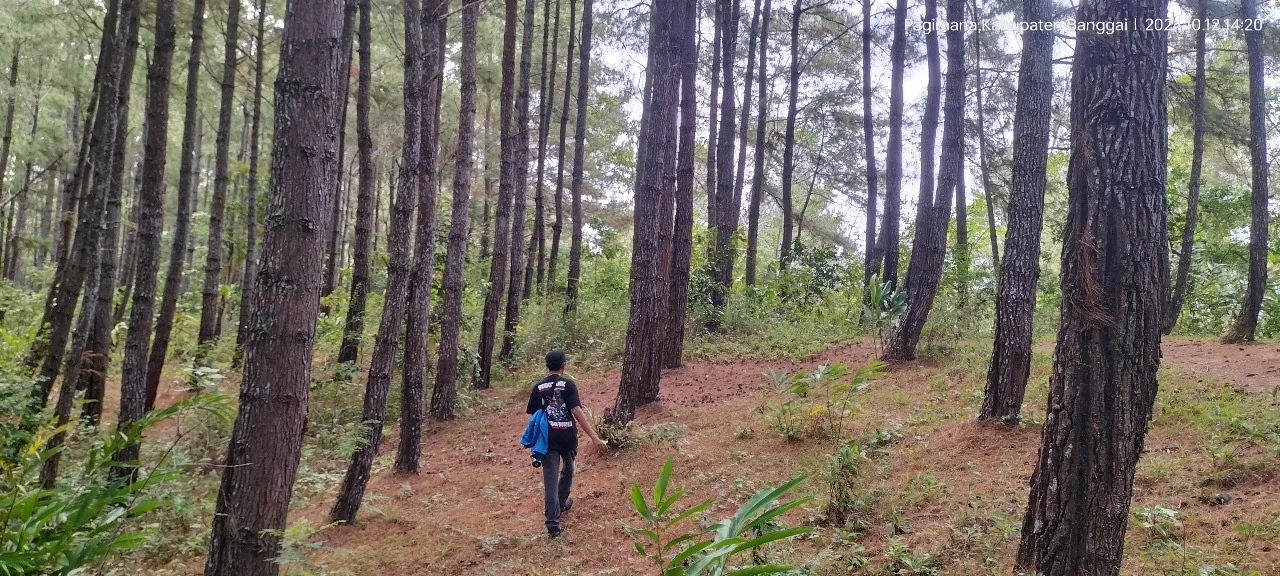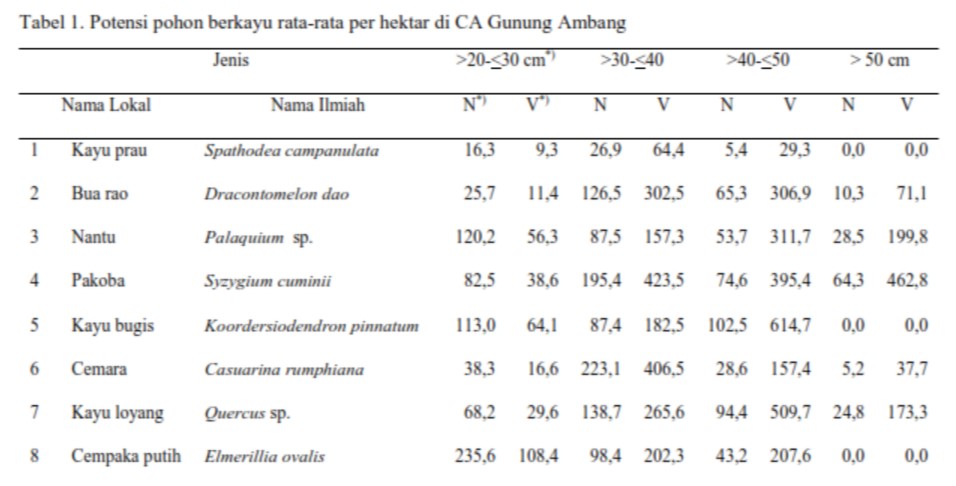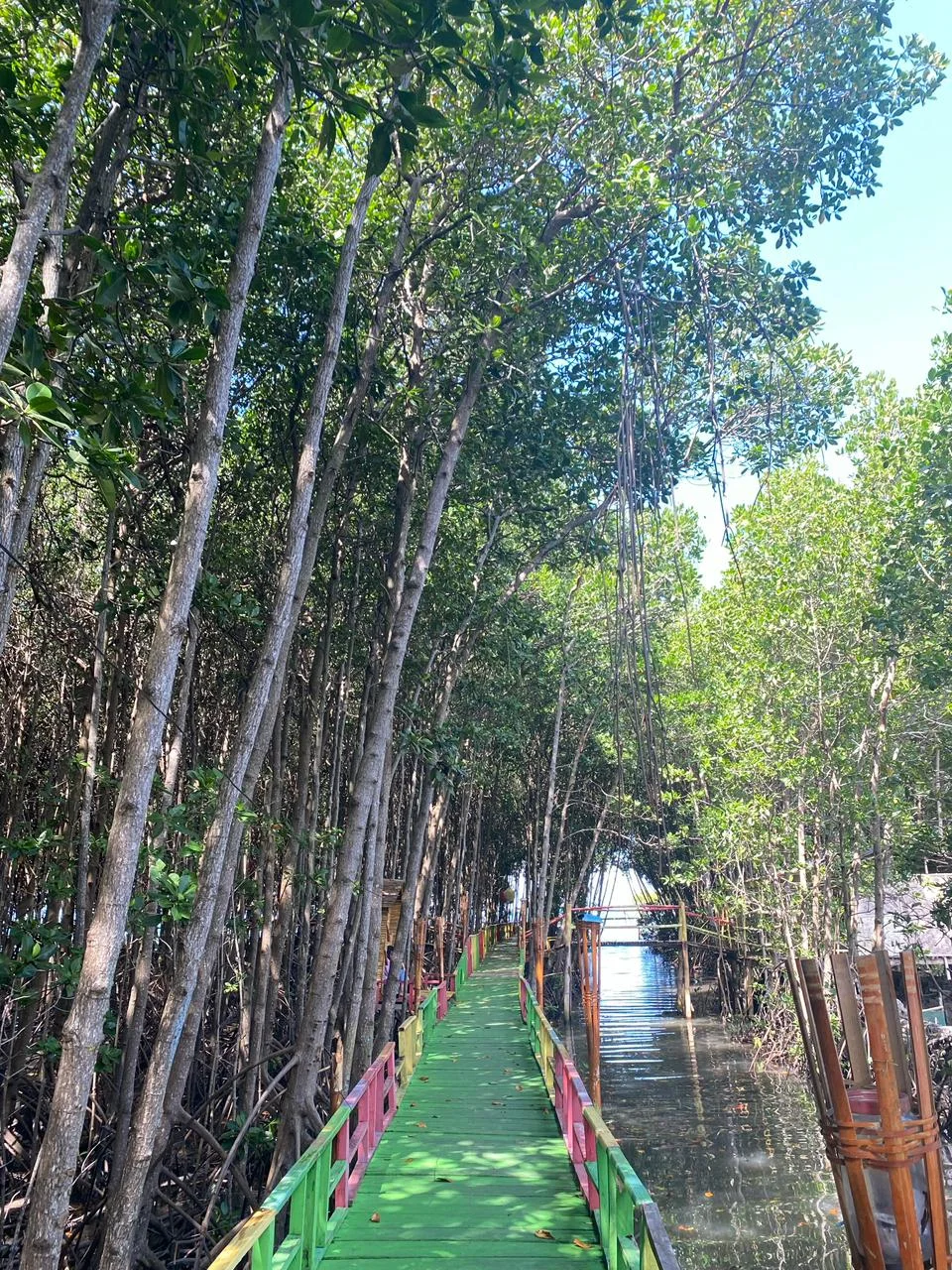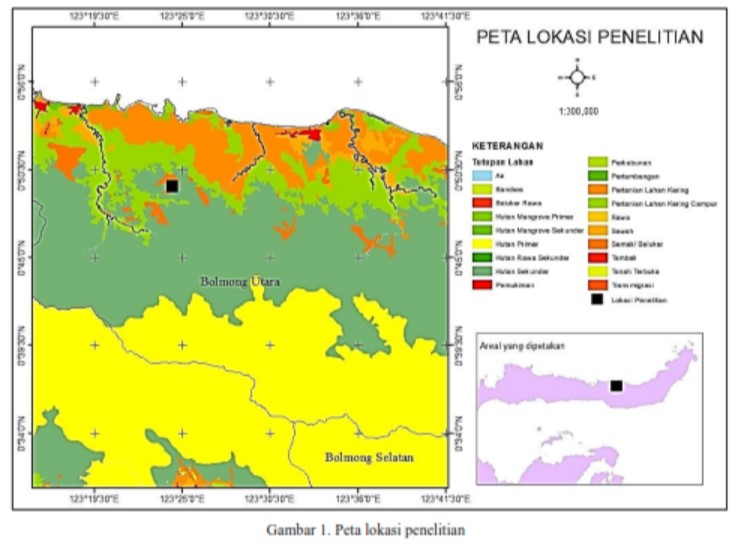Floristic Composition and Soil Characteristics in Muara Kaman Sedulang Nature Reserve, East Kalimantan
Abstract
Muara Kaman Sedulang Nature Reserve in East Kalimantan has been damaged due to anthropogenic activities and natural fires. The study aims to explore the floristic composition and soil characteristics in the rehabilitation and protection block to provide plant species information for the restoration activity. Vegetation data were collected in each block with a purposive random sampling method, in a total of 0,36 ha plot sample in rehabilitation block and 0,32 ha in protection block. Soil characteristics samples for physical and chemical measurement were collected in each plot with a composite technique at the soil surface (0 – 30 cm). There are 15 species recorded in rehabilitation block and 30 species in the protection block. The diameter distribution indicated that there are differences in the regeneration process after periods of destruction on each block. The diversity index in the rehabilitation block is low, while in the protection block is low to middle. Mallotus sumatranus is a dominant species in the rehabilitation block, whereas in the protection block is Lagerstroemia speciosa. Lepisanthes alata always presents in all research plots indicated suitability for all type of habitat in the area. Soil type is Endoaquepts Dystrudepts with silt clay loam texture and acid soil.
Copyright (c) 2021 Jurnal Wasian

This work is licensed under a Creative Commons Attribution-NonCommercial 4.0 International License.
Copyright and License
All articles published in Wasian Journal are the property of the authors. By submitting an article to Wasian Journal, authors agree to the following terms:
-
Copyright Ownership: The author(s) retain copyright and full publishing rights without restrictions. Authors grant the journal the right to publish the work first and to distribute it as open access under a Creative Commons Attribution 4.0 International License (CC BY 4.0).
-
Licensing: Articles published in Wasian Journal are licensed under a Creative Commons Attribution 4.0 International License (CC BY 4.0). This license allows others to share, copy, and redistribute the material in any medium or format, and adapt, remix, transform, and build upon the material for any purpose, even commercially, provided that proper credit is given to the original author(s) and the source of the material

This work is licensed under a Creative Commons Attribution 4.0 International License. -
Author's Rights: Authors are permitted and encouraged to post their work online (e.g., in institutional repositories or on their website) prior to and during the submission process, as it can lead to productive exchanges and greater citation of published work.
-
Third-Party Content: If your article contains material (e.g., images, tables, or figures) for which you do not hold copyright, you must obtain permission from the copyright holder to use the material in your article. This permission must include the right for you to grant the journal the rights described above.
-
Reprints and Distribution: Authors have the right to distribute the final published version of their work (e.g., post it to an institutional repository or publish it in a book), provided that the original publication in Wasian Journal is acknowledged.
For the reader you are free to:
- Share — copy and redistribute the material in any medium or format for any purpose, even commercially.
- Adapt — remix, transform, and build upon the material for any purpose, even commercially.
- The licensor cannot revoke these freedoms as long as you follow the license terms.
Under the following terms:
- Attribution — You must give appropriate credit , provide a link to the license, and indicate if changes were made . You may do so in any reasonable manner, but not in any way that suggests the licensor endorses you or your use.
- No additional restrictions — You may not apply legal terms or technological measures that legally restrict others from doing anything the license permits.
Notices:
You do not have to comply with the license for elements of the material in the public domain or where your use is permitted by an applicable exception or limitation .
No warranties are given. The license may not give you all of the permissions necessary for your intended use. For example, other rights such as publicity, privacy, or moral rightsmay limit how you use the material.
Most read articles by the same author(s)
- Tri Sayektiningsih, Ardiyanto Wahyu Nugroho, Ishak Yassir, Ulfah Karmila Sari, Amir Ma'ruf, Mukhlisi Mukhlisi, Adi Surya, Suryanto Suryanto, Community Perceptions of Impacts of Ecotourism and Its Implications on Ecotourism Development in the Balikpapan Bay, East Kalimantan , Jurnal Wasian: Vol. 6 No. 1 (2019): June

